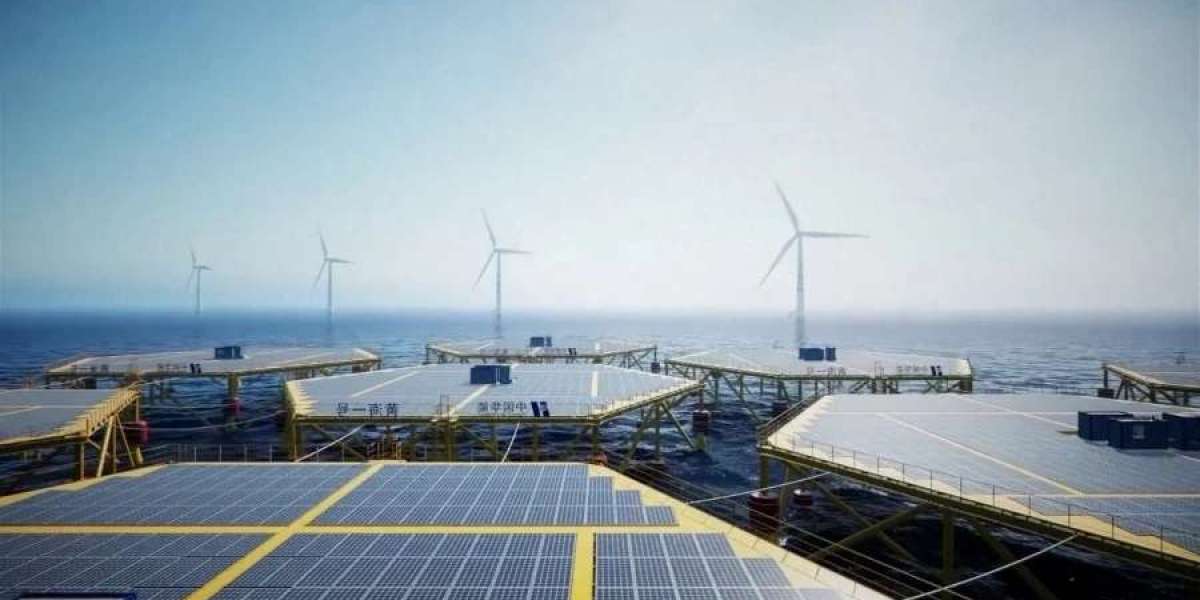International desk: China is now playing the role of a pioneer in the world in making 100% environmentally friendly electricity by utilizing the energy of the sun. The country is also trying to develop innovative technologies in this sector. Following this, a novel floating solar power generation platform has been installed in the Yellow Sea. On the other hand, the solar panels installed over 609 square kilometers of Qinghai have brought great momentum to the local economy.
A heterogeneous solar panel is being developed in China's Shandong Bay region in the Yellow Sea. A floating solar platform in the ocean is said to be wave resistant. That is, it will not face any obstacle in the production of electricity even in the midst of sea waves.
The construction of the Yellow Sea No. 1 platform, which has 434 photovoltaic panels, is now in its final stage. Soon it will start trial operation for one year. Basically, what type of panel can generate how much electricity in different conditions of the sea will be tested on the platform.
The floating platform is 7.5 meters above sea level. It floats down through many buoys. Ocean waves and water currents can easily pass through its bottom.
Yellow Sea No. 1 project engineer Bi Cheng said, 'If the tide water hits the photovoltaic panels, salt crystals will form and cause damage to the panels and other equipment. So the entire platform is placed above the sea at such a level that no matter what the sea conditions are like in the next 50 years, sea water will not come into contact with the panels.'
Where the floating platform is installed, the water depth is more than 30 meters. So 6 anchors are attached to the platform to deal with rough seas. Each of these weighs 55 tons. These anchors spread across 256 meters will keep the platform firmly seated on the seabed.
The project team will collect data from this platform for at least one year. In the future, many such platforms will be built separately and placed together at sea. By doing this, the sea will also become an endless source of electricity production.
On the other hand, fallow land is not being left uncultivated in China. There is a huge power plant in Qinghai province, which is twice the size of Dhaka, the capital of Bangladesh. Spread over 609 square kilometers, the Qinghai Talatan Photovoltaic Power Station has transformed the surrounding ecosystem and economy. A total of 8430 megawatts of electricity is being generated from the solar panels here.
"We are installing the heliostat," said Xiao Hongfei, vice president of Kuoneng New Energy Development. Each heliostat will automatically reflect sunlight onto a distant heat absorption screen. Like sunflowers, they change direction in accordance with the angular position of the sun.'
Experts said that more than 23 thousand heliostats will be installed here, as a result of which the heat of sunlight falling on an area of 7 lakh square meters will be reflected in the heat absorption tower in the center. The heat generated by this concentrated light can reach 500 to 600 degrees. From this collected thermal energy, the turbine will rotate, electricity will be generated.
This heat will be used to generate electricity at night and on cloudy days. There are 29,000 tons of molten salt in the thermal storage tank, which can generate electricity continuously for 12 hours after being heated.
Xiao Hongfei added, 'It can continuously release stored heat at night or on cloudy days. This will allow the unit to generate electricity continuously and overcome the limitations of photovoltaic systems.'
The entire power plant is expected to be commissioned next year. Even 10 years ago Talatan was a barren wasteland. 98 percent of the total area was desert. Many residents had to leave the area due to the sandstorm here. Since the construction of the photovoltaic power station, the average wind speed in the area has decreased by 50% and green grasslands have been created over 80% of the area. Flocks of sheep can now be seen in this area of Qinghai due to solar power plants. This has increased the income and standard of living of the locals.
Source: CMG

















































